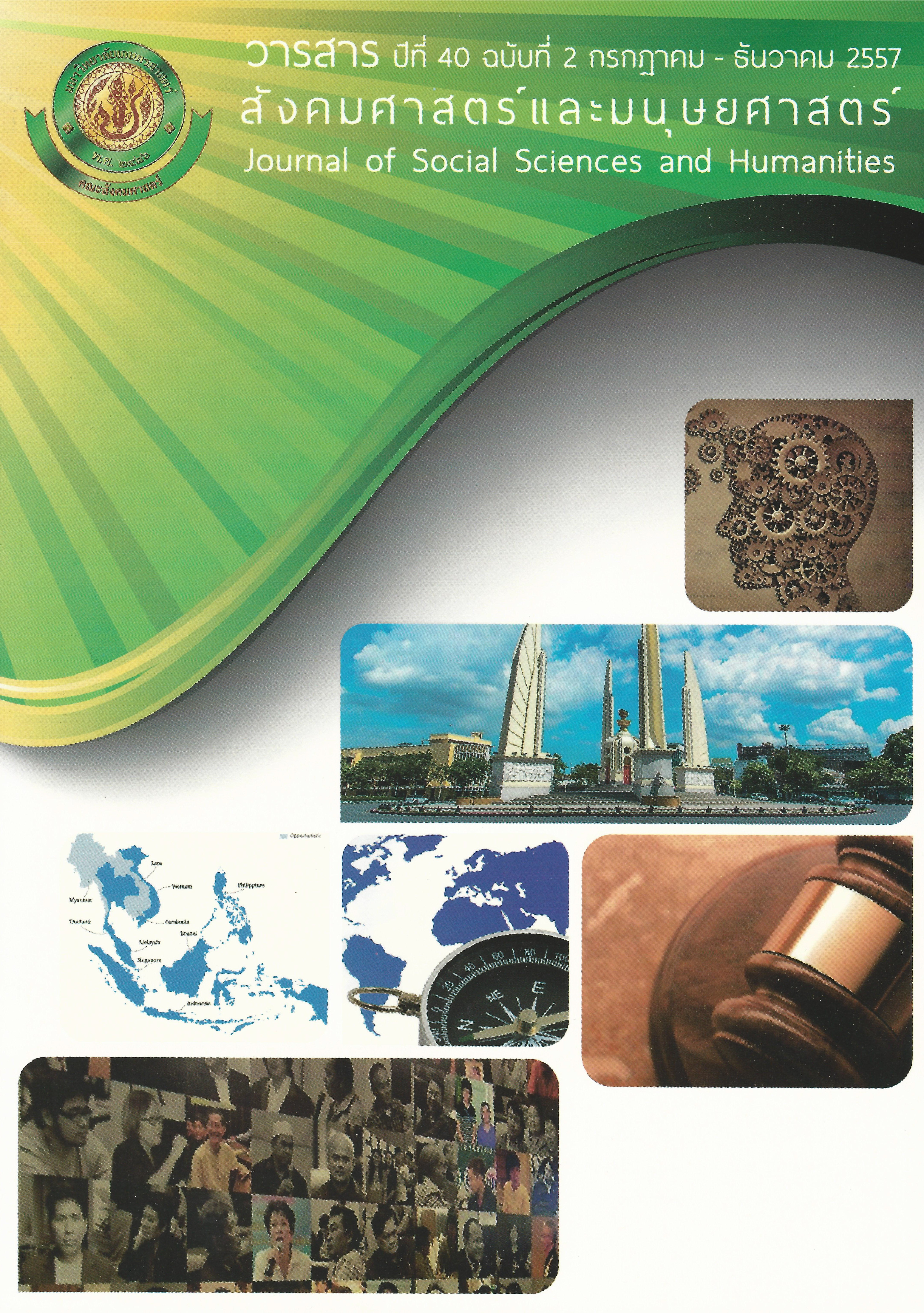มหาอำนาจอาหาร
Main Article Content
บทคัดย่อ
บทความชิ้นนี้มีจุดประสงค์สำคัญสองประการ ประการแรก คือ เพื่อชี้ให้เห็นกระบวนการในการควบคุม “อาหาร” ที่สามารถเพิ่มพูนอำนาจ และความเข้มแข็งให้กับชาติมหาอำนาจทั้งในระดับประเทศและระดับโลก โดยใช้ทฤษฎีวิพากษ์เชิงเศรษฐกิจการเมืองระหว่างประเทศเป็นกรอบในการ อธิบายความเป็นมหาอำนาจในฐานะศูนย์กลางทุนนิยมโลก ตัวอย่างที่หยิบยกมา คือ สหรัฐอเมริกาในยุค Pax Americana ที่ดำเนินมาตั้งแต่หลังสงครามโลกครั้งที่สองจนถึงปัจจุบัน ตั้งแต่กระบวนการผลิตอาหารจนถึงการกำหนดพฤติกรรมการบริโภคได้ถูกควบคุมโดยมหาอำนาจผ่านความร่วมมือ ระหว่างรัฐบาลและบรรษัทข้ามชาติซึ่งเป็นตัวแสดงเอกชนที่มีความมั่งคั่ง และความสามารถในการกดดัน หรือ “ล็อบบี้” รัฐบาล บทความชิ้นนี้จะชี้ให้เห็นเครื่องมือสำคัญของรัฐและบรรษัทสองประการ อันประกอบด้วย นวัตกรรมทางวัฒนธรรมอย่าง “อาหารจานด่วน” และนวัตกรรมทางวิทยาศาสตร์อย่าง “เทคโนโลยีพันธุวิศวกรรม” ประการที่สอง บทความชิ้นนี้ต้องการให้ความรู้กับผู้บริโภคทั่วไปในฐานะผู้ที่ได้รับผลกระทบโดยตรงเพื่อให้เกิดการตระหนักถึงรูปแบบการผลิตอาหารที่เปลี่ยนไป รู้เท่าทัน และปรับเปลี่ยนพฤติกรรมการบริโภคเพื่อประโยชน์และความปลอดภัยของผู้บริโภคเอง
Food Superpower
This paper has two main objectives. The first is to portray ‘food controlling process’ which helps superpowers strengthen their power domestically and globally by using Critical Theory in International Political Economy (Historical Materialism) as the theoretical framework. The case of ‘Pax Americana’ which has lasted from the end of the Second World War to the present time is elaborated here as an example to support the writer’s argument. The whole process from food producing to consumer behavior determining has been controlled by the cooperation between the US government and food transnational corporations. These affluent corporations are powerful enough to lobby the government for their preferred legislative or policy outcomes. Genetically modified organisms (GMOs) and ‘fast-food’ are two examples illustrated in order to portray how the United States has economically and culturally controlled global food production and consumption system. The second objective is to educate consumers who are direct stakeholders of this phenomenon so that they would realize and change their behaviors for their own benefits and safety.


